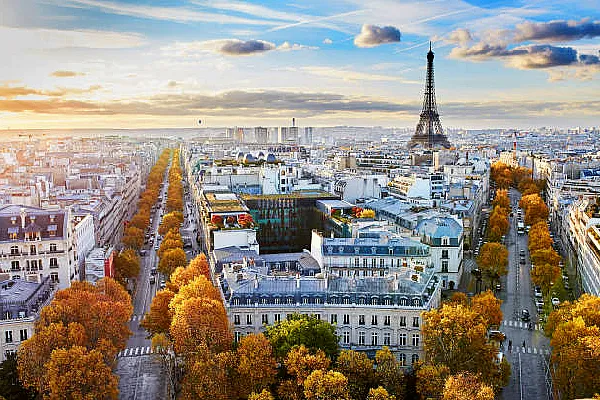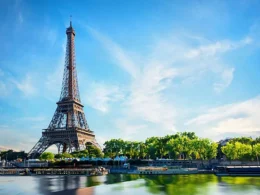Visiting the landmarks of the French Revolution offers a profound insight into one of the most significant periods in French history. The historical sites associated with this transformative era serve as potent reminders of the tumultuous events that unfolded during the late 18th century.
The Bastille, symbolizing the struggle for liberty and the overthrow of tyranny, stands as a testament to the revolutionary fervor.
The Palace of Versailles, once the opulent seat of the monarchy, reflects the stark contrast between the ruling elite and the oppressed masses.
Place de la Concorde bears witness to the solemn executions that marked the Revolution.
Meanwhile, the Panthéon serves as the final resting place for influential figures of the Revolution, underscoring their enduring legacy.
The Bastille: Symbol of Revolution
One cannot overlook the significance of the Bastille as a symbol of the French Revolution. The Bastille, a prison fortress in Paris, held political prisoners and became a potent symbol of the monarchy’s tyranny and oppression. Its storming on July 14, 1789, marked the beginning of the revolution and the end of the absolute monarchy.
The historical significance of the Bastille’s fall lies in its representation of the people’s struggle against the ruling class and their fight for freedom and equality. The event fueled the revolutionary fervor and inspired the drafting of the Declaration of the Rights of Man and of the Citizen.
The fall of the Bastille not only physically liberated its few remaining prisoners but also ignited a revolution that would change the course of French history.
Palace of Versailles: Seat of Monarchy
When did the Palace of Versailles become the seat of the monarchy during the French Revolution?
The Palace of Versailles became the seat of the monarchy during the French Revolution in 1682 when Louis XIV moved the royal court from Paris to Versailles.
This grand palace, with its opulent halls and vast gardens, symbolized royal extravagance and power.
The historical significance of Versailles as the seat of the monarchy is deeply rooted in its role as a center of absolute monarchy, where the king’s authority and splendor were prominently displayed.
Visiting this landmark evokes a sense of awe and wonder, transporting visitors to a time of immense wealth and influence.
The grandeur of Versailles serves as a reminder of a bygone era, sparking emotions of fascination, admiration, and reflection.
Place De La Concorde: Witness to Execution
During the French Revolution, Place De La Concorde served as a prominent location for public executions, continuing the somber historical narrative of the era. The square, previously known as Place Louis XV, was transformed into a site for public spectacles, including political executions. Notably, it was the location of the guillotine, where King Louis XVI and Queen Marie Antoinette met their tragic fate.
The executions at Place De La Concorde symbolized the radical shift in power and the fervent ideologies of the revolutionaries. These public spectacles were intended to instill fear and convey the consequences of opposing the revolution. The events that unfolded in this square during the revolution are a stark reminder of the tumultuous and violent nature of that period in French history.
Panthéon: Resting Place of Revolutionary Figures
The Panthéon is a revered resting place for revolutionary figures, often attracting visitors who seek to pay homage to these influential historical figures. Its historical significance is palpable, as it houses the remains of notable individuals such as Voltaire, Rousseau, and Marie Curie.
The grandeur of the Panthéon’s architecture and the solemn atmosphere inside evoke a sense of reverence and respect for the individuals interred within its walls. Moreover, the ongoing restoration project of the Panthéon aims to preserve its rich history and cultural significance for future generations.
Visitors often find themselves moved by the solemn beauty of this landmark, as they reflect on the enduring impact of these revolutionary figures and the turbulent yet transformative period of the French Revolution.
Frequently Asked Questions
What Are Some Lesser-Known Landmarks of the French Revolution That Are Worth Visiting?
Hidden gems of the French Revolution, with historical significance, include the Jacobin Club in Paris, where pivotal debates occurred, and the Conciergerie, a former prison where Marie Antoinette was held. These landmarks offer unique insights into the revolution’s lesser-known aspects.
Are There Any Specific Guided Tours or Events That Focus on the French Revolution Landmarks?
Guided tours and events focusing on French Revolution landmarks offer immersive experiences in revolutionary history. These tours provide in-depth insights into landmark preservation, allowing participants to explore the significance of these historical sites in the context of the revolution.
How Have the Landmarks of the French Revolution Been Preserved and Maintained Over the Years?
Preservation efforts for landmarks of the French Revolution have been extensive, involving restoration projects and ongoing maintenance. These sites are carefully conserved through meticulous historical research, architectural expertise, and dedicated funding to ensure their longevity and cultural significance.
Are There Any Controversial or Debated Aspects of the History Surrounding These Landmarks?
Controversial interpretations and historical debates surround the landmarks of the French Revolution, with differing viewpoints on events and figures. These debates add layers to understanding the complex history, prompting ongoing scholarly and public discourse.
Are There Any Modern-Day Events or Commemorations Related to the French Revolution That Take Place at These Landmarks?
Modern-day commemorations and landmark celebrations related to the French Revolution encompass historical reenactments, preservation efforts, and events that honor revolutionary events. These commemorations often bring to light controversial aspects of the revolution’s history and prompt critical reflection.










